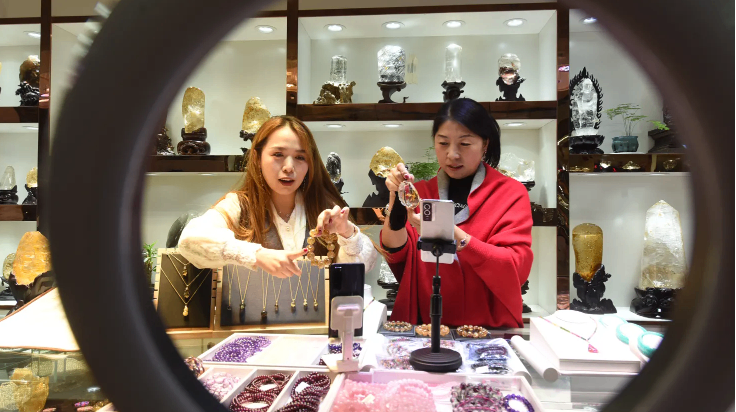



 ${ lang === 'zh' ? '中文': 'ENG' }
${ lang === 'zh' ? '中文': 'ENG' }




 ${ lang === 'zh' ? '中文': 'ENG' }
${ lang === 'zh' ? '中文': 'ENG' }
 ${formatTime('2025-02-21 14:52:35', 2)} ${formatTime('2025-02-21 14:52:35', 3)}, ${formatTime('2025-02-21 14:52:35', 1)}
${formatTime('2025-02-21 14:52:35', 2)} ${formatTime('2025-02-21 14:52:35', 3)}, ${formatTime('2025-02-21 14:52:35', 1)}

TikTok Shop, the e-commerce extension of the wildly popular short-video platform TikTok, is rapidly expanding in Southeast Asia, presenting a significant challenge to regional e-commerce giants like Shopee and Lazada.
Launched by TikTok’s parent company, ByteDance, TikTok Shop allows merchants, brands, and influencers to sell products directly through engaging video content. This model is designed to leverage the growing trend of impulse buying, where users make spontaneous purchases after watching videos. According to Sachin Mittal, head of telecom and internet research at DBS Bank, TikTok's ability to drive sales via content consumption gives it a competitive edge over other platforms.
TikTok Shop's expansion in Southeast Asia has been swift. In 2022, the platform launched in six countries across the region: Singapore, Malaysia, Indonesia, the Philippines, Vietnam, and Thailand. In just one year, TikTok Shop’s gross merchandise value (GMV) surged to $4.4 billion in Southeast Asia, representing a more than fourfold increase from the previous year. The platform has set ambitious goals for 2023, aiming for a GMV target of $12 billion.
While TikTok Shop’s current GMV is still far behind Shopee and Lazada—both of which posted $73.5 billion and $21 billion in GMV, respectively, in 2022—its rapid growth has raised concerns within the e-commerce industry. Analysts from Blue Lotus Research Institute estimate that TikTok Shop’s GMV will reach 20% of Shopee's by the end of 2023, prompting Shopee to increase its sales and marketing efforts in response.
One of TikTok Shop's unique advantages is its ability to engage young, tech-savvy consumers, particularly in Indonesia, the most populous country in Southeast Asia. Indonesia alone has approximately 113 million TikTok users, with 52% of them being young people. As of May 2023, the number of TikTok users across Southeast Asia stands at 135 million, providing TikTok Shop with a large and engaged audience.
In contrast to Shopee’s dominant position, TikTok Shop’s ability to capitalize on viral trends and drive impulse purchases has given it significant momentum. However, analysts caution that TikTok’s current aggressive growth strategy, which includes substantial financial incentives for both buyers and sellers, may not be sustainable in the long term. Jonathan Woo, senior analyst at Phillip Securities Research, estimates that TikTok is spending between $600 million and $800 million annually on incentives, which represents a substantial portion of its GMV target for 2023.
To encourage sellers to join the platform, TikTok Shop waived commission fees when it launched in Singapore in August 2022, requiring only a minimal payment fee of 1%. In comparison, Shopee charges higher fees of over 5% for commissions and service transactions.
Despite these early advantages, TikTok Shop faces several challenges. Unlike Shopee and Lazada, which have invested heavily in logistics to ensure faster deliveries and improved customer service, TikTok Shop currently lacks these end-to-end capabilities. Additionally, TikTok Shop's user base is still relatively young, which may translate into lower spending power compared to Shopee and Lazada's broader demographic.
As Shopee continues to dominate the region, especially in markets like Indonesia and Thailand, TikTok Shop remains in the early stages of its growth. While some analysts believe that TikTok Shop could eventually rival Shopee or Lazada, this is expected to take several years.
For now, TikTok Shop's influence is growing, and it remains to be seen how it will reshape the Southeast Asian e-commerce landscape as it competes with Shopee and Lazada.
Source: CNBC